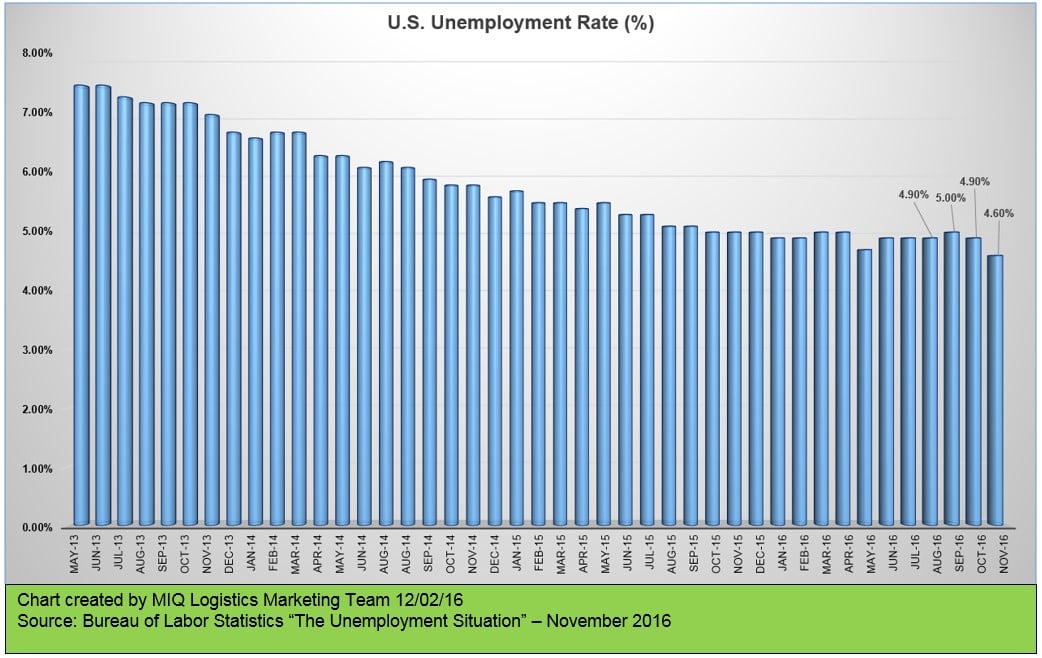Source: Bureau of Labor Statistics
The unemployment rate declined to 4.6 percent in November, and total nonfarm payroll employment increased by 178,000, the U.S. Bureau of Labor Statistics reported today. Employment gains occurred in professional and business services and in health care.
In November, the unemployment rate decreased by 0.3 percentage point to 4.6 percent, and the number of unemployed persons declined by 387,000 to 7.4 million. Both measures had shown little movement, on net, from August 2015 through October 2016.

Among the major worker groups, the unemployment rate for adult men declined to 4.3 percent in November. The rates for adult women (4.2 percent), teenagers (15.2 percent), Whites (4.2 percent), Blacks (8.1 percent), Asians (3.0 percent), and Hispanics (5.7 percent) showed little or no change over the month.
The number of job losers and persons who completed temporary jobs edged down by 194,000 to 3.6 million in November. The number of long-term unemployed (those jobless for 27 weeks or more) was little changed at 1.9 million and accounted for 24.8 percent of the unemployed. Over the past 12 months, the number of long-term unemployed was down by 198,000.
The civilian labor force participation rate, at 62.7 percent, changed little in November, and the employment-population ratio held at 59.7 percent. These measures
have shown little movement in recent months.
The number of persons employed part time for economic reasons (sometimes referred to as involuntary part-time workers), at 5.7 million, changed little in November but was down by 416,000 over the year. These individuals, who would have preferred full-time employment, were working part time because their hours had been cut back or because they were unable to find a full-time job.
In November, 1.9 million persons were marginally attached to the labor force, up by 215,000 from a year earlier. (The data are not seasonally adjusted.) These individuals
were not in the labor force, wanted and were available for work, and had looked for a job sometime in the prior 12 months. They were not counted as unemployed because they had not searched for work in the 4 weeks preceding the survey.
Among the marginally attached, there were 591,000 discouraged workers in November, little different from a year earlier. (The data are not seasonally adjusted.) Discouraged workers are persons not currently looking for work because they believe no jobs are available for them. The remaining 1.3 million persons marginally attached to the labor force in November had not searched for work for reasons such as school attendance or family responsibilities.
Source: Bureau of Labor Statistics
